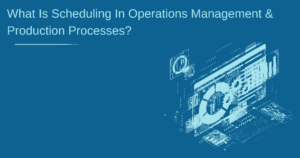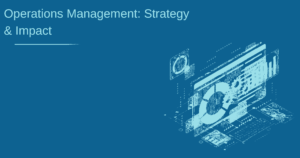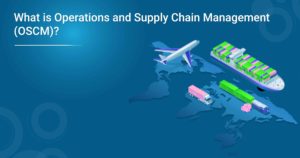There are many different models of quality assurance, but they all share a similar goal: to ensure that products and services meet specific standards of quality. Quality assurance is a process that assesses whether or not a product or service meets these standards.
There are many different ways to approach quality assurance. Some companies may have their in-house quality assurance programs, while others may outsource this function to third-party organisations. There are also various international standards that companies can choose to follow, such as the ISO 9000 series or the Six Sigma methodology.
The most significant thing is to find a quality assurance model that works for your company and your specific needs. There is no one-size-fits-all solution, so it’s essential to tailor your approach to your products and services.
The significance of quality assurance cannot be understated. In today’s global economy, customers have more choices than ever before, and they will be quick to take their business elsewhere if unsatisfied with your product or service quality.
By ensuring that your products and services meet the highest possible standards, you can give yourself a competitive advantage and keep your customers coming back for more.
Also Read: Operations Management: Syllabus, Courses, and Certifications
What are the Different Types of Quality Assurance Models?
Models of quality assurance are the methods and techniques used to ensure that products or services meet a certain standard of quality. They can help organisations ensure that all standards are met before any product or service is released into the marketplace.
There are several different types of Quality Assurance models, including:
- Statistical process control (SPC)
- Six Sigma
- ISO 9000
- Total Quality Management (TQM)
Each of these models has different strengths and weaknesses that must be considered when choosing the proper model for a specific situation.
Statistical Process Control: Process control monitors processes over time by measuring and recording their performance. It helps identify the root causes of problems and continuously improves the process. It allows organisations to identify improvement areas and track progress to ensure that processes operate within specific quality specifications.
Benefits of Statistical Process Control:
- Continuous process improvement: Processes can be monitored and improved as needed to meet quality standards.
- Reduced costs: By detecting problems early on, organisations can reduce the cost of rework and scrap by preventing quality issues in the future.
- Increased efficiency: SPC can help organisations improve their output by identifying problems before they become too large and costly.
- Effective problem solving: SPC helps organisations identify problems and develop solutions promptly.
- Reduced waste and improved efficiency: By tracking performance, organisations can identify trends in quality and reduce waste.
- Increased customer satisfaction: It is quite evident that customers prefer quality products and services, which is why it’s essential to identify any potential issues before they occur.
Six Sigma: It is a data-driven approach to improving process performance. It focuses on reducing variability, increasing customer satisfaction, and achieving cost savings. It is the most widely used quality improvement program in many different industries, including healthcare, finance and manufacturing.
Six Sigma can help you identify problems quickly, make improvements and track progress. It also requires that you measure performance to ensure that improvements are being made. By utilising Six Sigma techniques, businesses can become more efficient and effective in their operations, leading to improved customer service and better bottom-line results.
Benefits of Six Sigma:
- Improved quality and customer satisfaction: Reducing variability leads to enhanced quality and customer satisfaction.
- Faster process flow: Improving processes’ speed can help increase productivity and efficiency.
- Reduced costs: You can save money by reducing the time and money spent on process improvement.
- Increased efficiency: By making improvements to processes and reducing defects, businesses can become more efficient.
- Increased employee satisfaction: Employees feel motivated when they see that their efforts make a difference in the quality of products and services.
- Improved bottom-line results: These factors lead to better bottom-line results for businesses.
ISO 9000: ISO 9000 is the international standard for quality management. It is a set of principles, processes and guidelines that an organisation can use to help them provide quality products or services. This model provides a framework for organisations to ensure consistent product or service delivery and customer satisfaction.
ISO 9000 focuses on four key components:
- Customer focus
- Leadership
- Process approach
- Continual improvement
By following the principles of ISO 9000, organisations can create a robust quality management system and achieve their desired quality goals. This system also ensures that the organisation follows specific processes to consistently deliver products or services.
Benefits of ISO 9000:
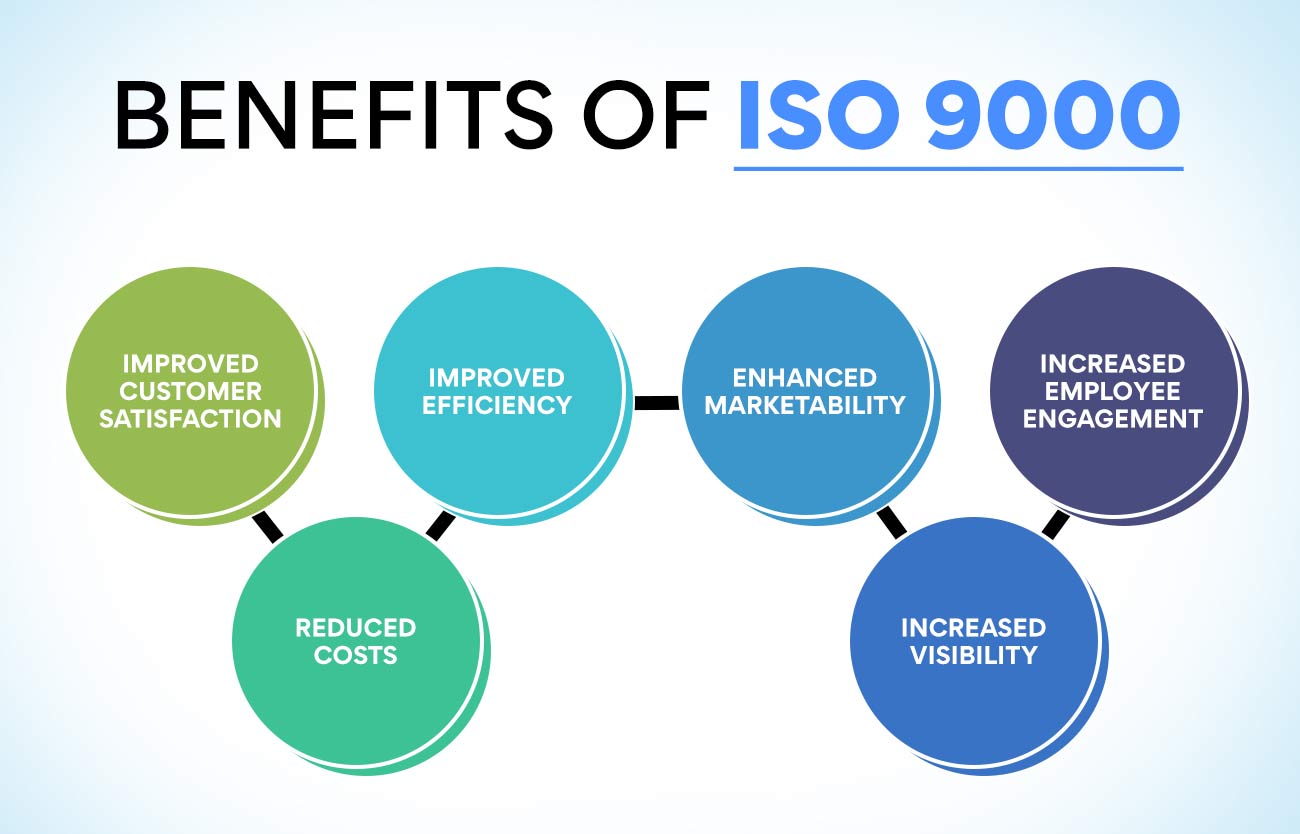
- Improved customer satisfaction: ISO 9000 promotes customer focus and continual improvement, ultimately improving customer satisfaction.
- Improved efficiency: By establishing standard processes, organisations can become more efficient in producing goods and services.
- Enhanced marketability: Organisations implementing ISO 9000 can demonstrate their commitment to the model of quality assurance, thus making them more attractive to potential customers.
- Increased employee engagement: The principles of ISO 9000 foster a culture of continuous improvement, which can lead to increased employee engagement and satisfaction.
- Reduced costs: By establishing regularly reviewed and improved processes, organisations can reduce their costs.
- Increased visibility: ISO 9000 provides a structured approach to documenting and communicating quality objectives, leading to increased organisational visibility.
Total Quality Management: It is an organisational approach that uses continuous improvement techniques and culture shifts to improve business processes and performance metrics. It also emphasises employee involvement in decision-making, problem-solving and continual improvement activities.
Quality assurance is the practice of ensuring consistent quality in products, services and processes. It is the best quality assurance model that emphasises customer satisfaction and continual process improvement while ensuring that the product or service quality always stays below a certain standard. Quality assurance is closely linked with TQM and focuses on prevention rather than detection.
Benefits of TQM in quality assurance:
- Eliminate or reduce defects in products and services: Instead of focusing on detecting and correcting errors, TQM focuses on prevention. This helps to reduce or eliminate defects in products and services before they are released.
- Foster customer satisfaction: TQM puts the customer at the centre of operations, providing a better understanding of their needs and their feedback. This allows organisations to respond quickly to customer requirements, improving customer satisfaction and loyalty.
- Improved profits: By reducing or eliminating defects, organisations can reduce costs associated with fixing mistakes and improve their overall profitability.
- Reduce waste: TQM encourages organisations to use their resources as efficiently and effectively as possible, reducing waste and increasing efficiency.
The framework of the Quality Assurance Plan
The framework of a quality assurance plan specifies the organisational structure and responsibilities for quality assurance activities, as well as the resources, processes, and techniques to be used.
A quality assurance plan should be tailored to the organisation’s specific needs and its products or services. However, all quality assurance plans should address four key elements: quality objectives, roles and responsibilities, resources, and processes.
Quality objectives are the goals an organisation wants to achieve with its quality assurance activities. They should be specific, measurable, achievable, relevant, and time-bound (SMART).
Roles and responsibilities define who is responsible for each stage of the quality assurance model process. It includes who will perform quality assurance activities, who will review results, and who will make decisions about corrective actions.
Resources are the people, equipment, facilities, materials, and other assets necessary to carry out quality assurance activities.
Processes are the specific methods or techniques that will be used to carry out quality assurance activities. These should be designed to ensure that products or services meet applicable requirements and customer expectations.
Also Read: What Is The Transformation Process In Operations Management?
How To Evaluate Quality Assurance?
There are several ways to evaluate quality assurance. One way is to look at how well the quality assurance process is followed. It can be done by scrutinising the documentation, observing employees, and speaking with customers. Another way to evaluate quality assurance is to look at the results of the process. It can happen by looking at customer satisfaction surveys, product defects, and employee turnover.
There is no definitive answer, as the steps required to evaluate the quality assurance model will vary depending on the assessed process or system. However, some general steps can be followed when assessing any quality assurance process:
- Define the scope of the evaluation. This includes identifying what aspect of the quality assurance process will be evaluated and setting clear objectives for the evaluation.
- Review existing documentation related to the quality assurance process. This could include quality control plans, standard operating procedures, and previous audits or evaluations.
- Conduct interviews with key personnel involved in the quality assurance process. This step will help to understand how the process works in practice and identify any areas of concern or improvement.
- Observe the quality assurance process in action. Where possible, it is helpful to observe first-hand how the process works to understand its effectiveness better.
- Collect data relating to the performance of the quality assurance process. This data could include defects rates, customer feedback, or scrap/rework levels. This step will help quantify how well the quality assurance process performs.
6 Analyse collected data and prepare a report documenting the evaluation findings. This report should include recommendations for improvement where necessary.
Factors to Consider When Deciding The Best Quality Assurance Model
There are several factors to examine when determining the best quality assurance model for your organisation. Here are a few of the most critical factors:
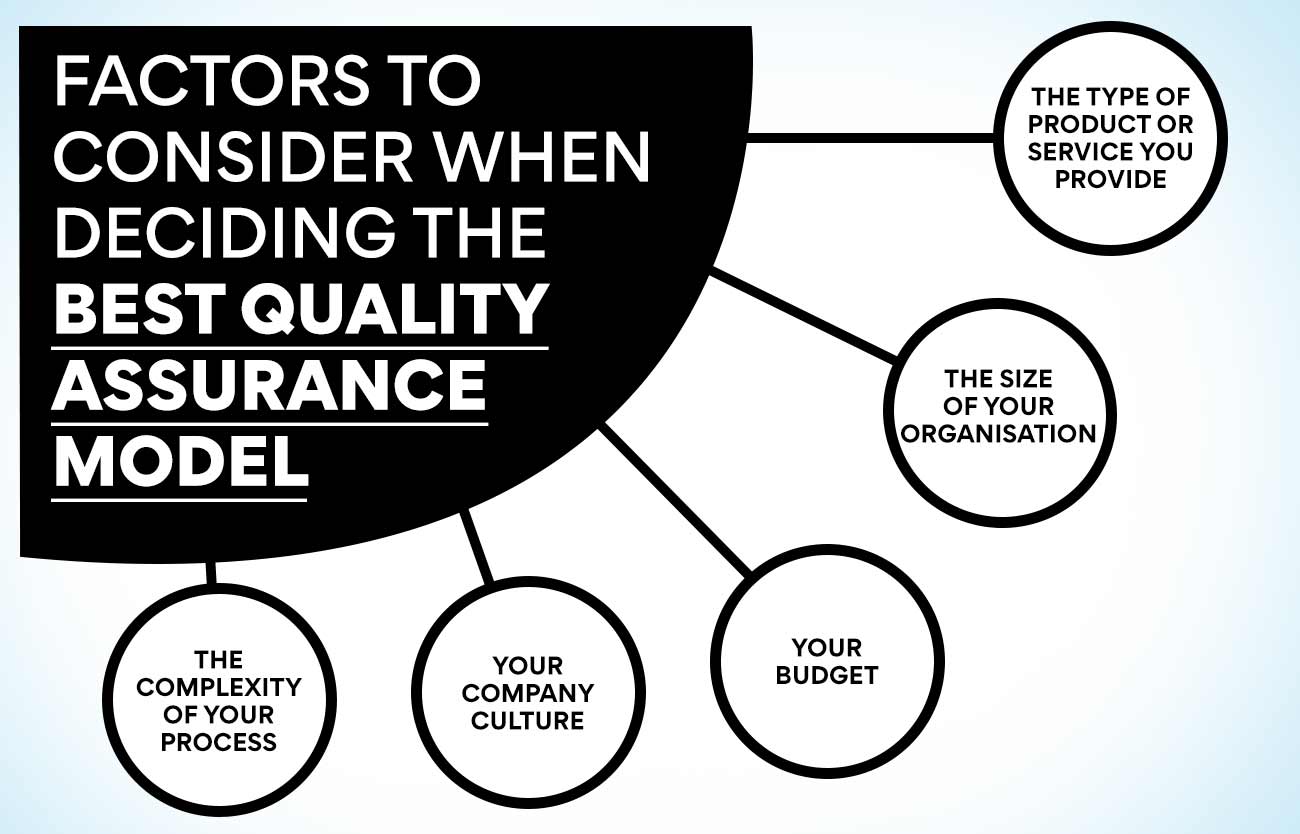
- The type of product or service you provide: Different products and services require different quality assurance models. For example, if you provide a software as a service (SaaS) product, you would likely need a different quality assurance model than if you manufactured physical goods.
- The size of your organisation: The size of your organisation will also dictate what type of quality assurance model is best for you. Generally speaking, larger organisations will require more complex models, while smaller organisations can get by with simpler ones.
- Your budget: Obviously, your budget is a significant factor in deciding which quality assurance model is suitable for you. More complex models will generally cost more to implement and maintain than simpler ones.
- Your company culture: Your company culture should be considered when choosing a quality assurance model. For example, if your company culture values customer feedback and collaboration, then you should choose a model that emphasises those things.
- The complexity of your process: If your process is very complex, you’ll need a quality assurance model that can handle that complexity. Conversely, if your process is relatively simple, you can get by with a simpler model.
How Different Models of QA Help?
There are many different models of quality assurance that can help organizations enhance the quality of services and products. Some of the most popular models include the Six Sigma model, the Malcolm Baldrige National Quality Award model, and the ISO 9000 family of standards. Interestingly, some industries, such as the growing online gambling market, have adapted their own practices to ensure compliance and user trust.
Each of these models has its unique approach to quality assurance, and each can be helpful in different ways. The Six Sigma model, for example, emphasises defect prevention and continuous improvement, while the Malcolm Baldrige National Quality Award model focuses on organisational excellence.
The right model for your organisation will depend on your specific needs and goals. However, all of these models can help improve the quality of your products and services.
Conclusion
There are several different models of quality assurance, each with its definition, meaning, and framework. The best model for your organisation will depend on your specific needs and goals. However, all quality assurance models share the goal of improving the quality of products or services. By implementing a quality assurance program, you can improve the overall quality of your organisation’s output and better meet the needs of your customers or clients.
If you’re interested in learning more about models of quality assurance and how to optimise productivity, our Advanced Certificate in Operations, Supply Chain and Project Management is the perfect course for you. This certificate combines industry-based knowledge with theoretical concepts to give students and professionals an advanced understanding of business operations.
More Information:
What Is Scheduling In Operations Management & Production Processes?
Operations Management: Nature, Scope & Fundamentals
What Is Scheduling In Operations Management & Production Processes?











